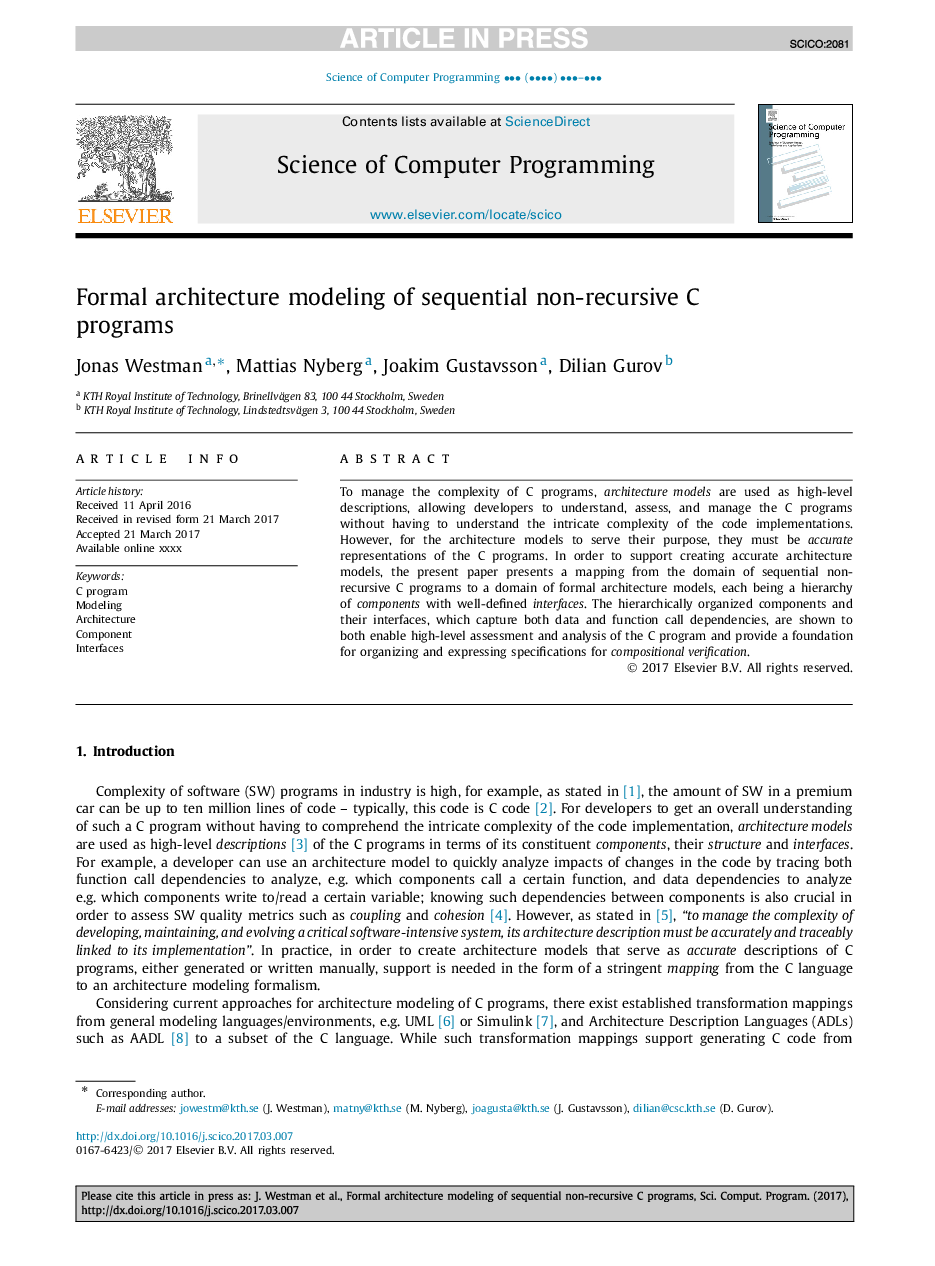| Article ID | Journal | Published Year | Pages | File Type |
|---|---|---|---|---|
| 4951790 | Science of Computer Programming | 2017 | 26 Pages |
Abstract
To manage the complexity of C programs, architecture models are used as high-level descriptions, allowing developers to understand, assess, and manage the C programs without having to understand the intricate complexity of the code implementations. However, for the architecture models to serve their purpose, they must be accurate representations of the C programs. In order to support creating accurate architecture models, the present paper presents a mapping from the domain of sequential non-recursive C programs to a domain of formal architecture models, each being a hierarchy of components with well-defined interfaces. The hierarchically organized components and their interfaces, which capture both data and function call dependencies, are shown to both enable high-level assessment and analysis of the C program and provide a foundation for organizing and expressing specifications for compositional verification.
Related Topics
Physical Sciences and Engineering
Computer Science
Computational Theory and Mathematics
Authors
Jonas Westman, Mattias Nyberg, Joakim Gustavsson, Dilian Gurov,
